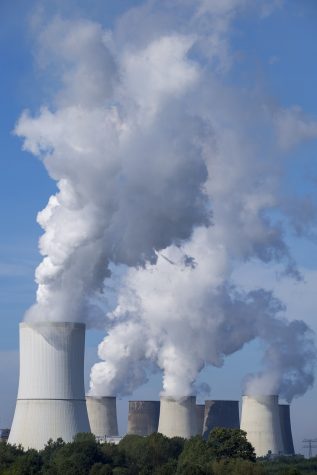The Beginning of the End

Bramble Cay melomys is also called the Bramble Cay Mosaic-Tailed Rat.
Most individuals would act nihilistic or apathetic towards the extinction of a rat from an island in the Great Barrier Reef. However, the extinction of Bramble Cay Melomys plays an important role in the argument surrounding climate change.
Bramble Cay Melomys was a small rat-like rodent from a nine-acre island known as Bramble Cay. The melomys populated a small two-acre portion of the island that was covered in tall grass. At the time of discovery in 1845, it was recorded that hundreds of the rodents populated the island, but in 2008, the last recording of them estimated fewer than 50 mature individuals and less than 100 total rats.
In 2008, the melomys underwent the process of a “recovery plan” by the researchers who had surveyed the island. However, when they returned in 2011, no melomys could be found. The last sighting of the Bramble Cay Melomys was in 2009, and the fisherman that last saw them said he only saw a few dozen. The rodents are believed to have gone extinct as a result of global warming.

Solar and wind energy give hope to the future of energy and survival of many of the world’s species.
The death of the Bramble Cay Melomys sheds a dreary light on the situation the world may be in. With the literal rising tide of climate change, more mammals may be wiped from our planet due to the ways we live and the use of resources we take for granted. Climate change is beginning to take victims and it is up to humans to choose how, when, and if it happens.
The use of fossil fuels has been associated with the death of Bramble Cay Melomys due to the rise in sea levels along with CO2 levels. According to the EPA for roughly 2,000 years the change in sea levels has been negligible. Then, from 1880 till 1993 the average rate of change was 0.06 inches per year and from 1993 till now the rate has doubled to 0.12-0.14 inches. The island of Bramble Cay has a maximum elevation of nine meters, thus any rise in sea levels can greatly affect the island.
The melomys was also negatively affected by an increase in precipitation.
“On average, total annual precipitation has increased over land areas [..] worldwide. Since 1901, global precipitation has increased at an average rate of 0.08 inches per decade…” said the EPA website.
The increase in precipitation may have increased flooding on the small island leading to erosion and plant death as well as the drowning of the melomys themselves. Anthony Patritto, Rochester Adams anatomy and biology teacher displays his concern over the death of Bramble Cay Melomys.
“We had an idea [global warming] was going to come. We didn’t know how fast and we didn’t know how far-reaching and if we have a species that we can specifically say has become extinct that’s just the first of what’s probably going to be many,” said Patritto.
Patritto then says why he believes climate change is true.
“I will be very honest, in the late 80s early 90s, I was skeptical about the realities of global warming, but there’s clearly been an enlightenment over the last 25 years where now [most] climatologists are 100 percent on board saying this is a verifiable phenomenon and enhanced greenhouse effect is logical in terms of physics,” said Patritto.

Nuclear energy displays potential in replacing fossil fuel energy.
Patritto goes on to explain his concern through predicting climate changes prognosis,
“This is kind of like trying to stop an earthquake though, and population growth won’t slow down or it’s not going to stop, and of all the variable we want to control whether its carbon emissions or whatever, that’s fine but as long as population continues to grow at this rate… not a lot we can do I don’t think,” said Patritto.
NASA backs up Patritto’s predictions.
“Humans have increased atmospheric CO2 concentration by more than a third since the Industrial Revolution began. This is the most important long-lived ‘forcing’ of climate change,” said NASA.
However, not everyone agrees with NASA and Patritto’s views. In a video by PragerU, titled “Do 97% of Climate Scientists Really Agree,” author Alex Epstein rebuttals against climate change.
”…In the case of fossil fuel that upside is enormous: the cheap, plentiful, and reliable energy that makes modern life possible, and at a scale, no other energy source can match,” said Epstein.
Epstein uses the economic benefit of fossil fuels to his advantage in his argument. However, the benefit and reliability of fossil fuels are limited due to their non-renewability. Green resources including wind, solar, hydroelectric, fuel cells, and geothermal are renewable and unlimited unless over-harvested. In the long run, green energy may also save money due to the low cost of producing energy, but as of now, creating the machines to harness solar and wind energy is expensive.
Fossil fuels already have been harvested for over a century so the change to entire green energy will be expensive. Yet, since 1958 the United States has been harvesting nuclear energy and although non-renewable, Nuclear energy is more efficient and produces no greenhouse gasses. In a study done by the European Nuclear Society, uranium-235 has 2 million to 3 million times more energy than coal or oil.
The only downsides to nuclear energy are harmful wastes, meltdowns, and expensive start-up cost. As of now, 90 percent of the waste produced by nuclear fission may be stored safely. The remaining 10 percent is either stored on site until more secure storage is available or the waste is stored deep underground.
“In over 17,000 cumulative reactor-years of commercial operation in 33 countries, there have been only three major accidents to nuclear power plants,” said the World Nuclear Association on the topic of meltdowns.

Fossil fuels are fuels that are comprised of hydrocarbons from millions of years ago. Burning such fuels releases CO2 and creates an excess of CO2 that warms the planet.
Thus the chances of another meltdown are slim, and those that have already occurred were freak accidents. As for the expensive cost, there is not much we can do about the construction cost of the plants. Nuclear plants require large facilities to ensure safe conditions for fission to occur without negatively impacting the surrounding environment.
The death of the Bramble Cay Melomys is a somber reminder of how global warming may continue to affect the planet. Although the melomys are gone there is still hope. With a change in energy usage, climate change may be postponed or reversed. Fossil fuels are non-renewable and the main force in climate change and can be easily avoided with green or nuclear energy and the use of electric vehicles. Climate change is a worldwide problem and will continue to get worse unless a change is enacted.






